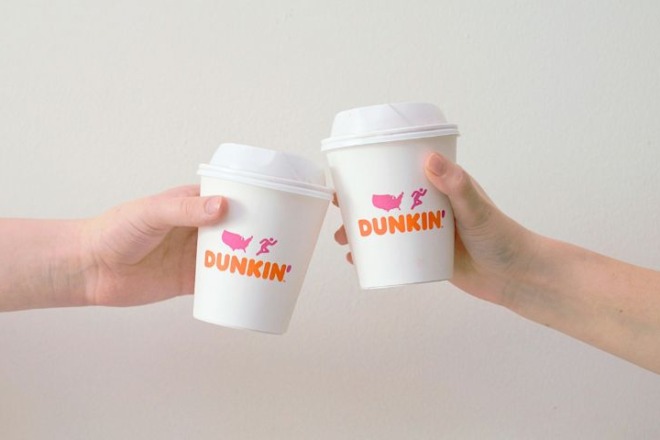In 2025, the types of digital marketing that move the needle are more advanced and essential than ever. This is especially true for small and medium businesses, designers and marketing professionals. With consumer attention shifting to digital platforms, a strong online presence is a core business activity. From social media and email campaigns to SEO and paid ads, today’s digital marketing landscape offers more tools to grow a brand, reach the right audience and convert interest into action.
However, to get higher conversions and consistent brand growth, businesses must focus on strategies that align with their goals, budget and audience behavior. Not every tactic works for everyone, and understanding the different types of digital marketing makes a real difference. Choosing the right mix turns marketing efforts from a shot in the dark into a smart, scalable growth engine.
Content Marketing
Blogs, ebooks and guides are powerful tools for building authority and trust in a crowded digital space. When a business consistently shares helpful, well-written resources, it positions itself as a go-to expert in its industry. This type of content doesn’t just attract attention — it earns it. SEO-driven content, in particular, helps businesses appear in search results when potential customers actively seek answers.
That visibility matters, especially when organic traffic can lead to long-term growth without the constant cost of paid ads. In fact, the global content marketing industry brought in roughly $63 billion in revenue in 2022. This number proves that high-quality content is effective and means big business. For small and medium brands, publishing valuable resources can drive more website visits, boost brand credibility and keep audiences coming back for more.
Social Media Marketing
For small and medium businesses looking to grow their brand and connect with customers, platforms like Facebook, Instagram and LinkedIn continue to deliver real results. Each platform brings something different. Facebook offers strong community-building tools, Instagram excels at visual content and LinkedIn is a hub for B2B networking and industry insights.
With consumers now averaging accounts on at least 6.7 different platforms, there’s more opportunity than ever for businesses to show up and stay top of mind. To capture attention and encourage interaction, content types like reels, carousels and live sessions consistently perform well across industries.
These formats boost reach and invite real-time engagement that helps turn passive viewers into active followers. When used strategically, social media drives lasting engagement, builds brand loyalty and fuels steady lead generation. For SMBs working with lean budgets, mastering a few key platforms can unlock serious growth without overcomplicating the strategy.
Email Marketing
Email marketing continues to be one of the top-performing digital marketing channels for ROI, and it’s easy to see why. It gives small and medium businesses a direct line to their audience — no algorithms, no guesswork. With tools for automated campaigns, targeted newsletters and smart lead nurturing, email lets marketers stay in touch with customers at every stage of the buyer journey.
It’s also highly customizable, which means businesses can tailor their messaging based on interests, behavior and past interactions. But none of that works without a quality email list. The best results come from lists built organically through website sign-ups, lead magnets and exclusive offers — not bought or borrowed contacts. A strong list of people who want to hear from the brand drives open rates, click-throughs and conversions. Email remains a no-brainer for designers and marketers looking to scale trust and sales.
Search Engine Optimization
SEO continues to be one of the most effective ways for small and medium businesses to boost visibility, attract the right audience and drive sustainable growth. It covers three main areas:
- On-page SEO: Includes optimizing website content, structure and keywords
- Off-page SEO: Focuses on building authority through backlinks and brand mentions
- Local SEO: Helps businesses show up in map packs and location-based searches
Each area helps businesses climb the search rankings and stay visible where it counts — on the first page of Google. That visibility is crucial, especially when most users don’t scroll past the top few results. With global search advertising surpassing $300 billion in market volume in 2024, it’s clear that appearing in search results carries serious value. The best part is, unlike paid ads, organic traffic from SEO keeps working over time, even without constant spending. Investing in SEO is a smart and scalable move for any business serious about long-term digital success.
Pay-Per-Click Advertising
Pay-per-click (PPC) advertising remains a go-to strategy for businesses looking for fast, measurable results. Platforms like Google Ads and Meta Ads lead the charge in this type of digital marketing. These tools offer powerful targeting options that let marketers reach the right audience based on location, interests, search intent and past behavior.
The level of control it offers makes PPC especially appealing to small and medium businesses. Budgets can be set by day, campaign or goal, and performance can be tracked in real time to adjust strategy on the fly.
Unlike organic marketing, which can take time to build momentum, PPC delivers immediate visibility at the top of search results or social feeds. It’s a great way to promote new products, test offers or boost brand awareness with a highly targeted approach. When used wisely, PPC can generate strong returns without blowing through a marketing budget.
Influencer Marketing
Influencer marketing has become one of the most effective digital strategies for driving ROI, especially with blog content and social media shopping tools. Together, these channels consistently rank among the highest performers in terms of return on investment. Working with micro-influencers often delivers better results for small and medium businesses than partnering with big-name celebrities.
Micro-influencers tend to have more engaged audiences, stronger community trust and a deeper connection with their niche or local followers. This makes them ideal for businesses targeting specific markets or building awareness in a particular region.
To get the most from influencer partnerships, it’s important to choose creators whose audience and values align with the brand, offer them creative flexibility and track performance with tools like custom links or discount codes. When done well, influencer marketing builds credibility, drives engagement and helps turn social followers into loyal customers.
Video Marketing
Video marketing continues to dominate in 2025, with platforms like YouTube and TikTok leading the way in reach, engagement and audience influence. Short-form video trends are especially powerful, capturing attention quickly and encouraging users to interact, share and explore more. For small and medium businesses, video offers a chance to connect on a human level through how-to content, customer testimonials and behind-the-scenes clips that showcase the people and passion behind the brand.
These formats educate, entertain and build trust — something today’s digital audiences value more than ever. Visual storytelling makes it easier for businesses to explain their value, highlight products or services and create memorable touchpoints that drive awareness and conversions. Whether a quick TikTok reel or a detailed YouTube tutorial, the right video content can turn viewers into customers and casual fans into loyal advocates.
Choosing the Right Types of Digital Marketing for Your Business
With so many types of digital marketing available, it’s smart for businesses to focus on two to three tactics that align with their goals and audience. Start by auditing your current efforts, then make small, strategic changes to build momentum and see real results.
About The Author
Cooper Adwin is the Assistant Editor of Designerly Magazine. With several years of experience as a social media manager for a design company, Cooper particularly enjoys focusing on social and design news and topics that help brands create a seamless social media presence. Outside of Designerly, you can find Cooper playing D&D with friends or curled up with his cat and a good book.


